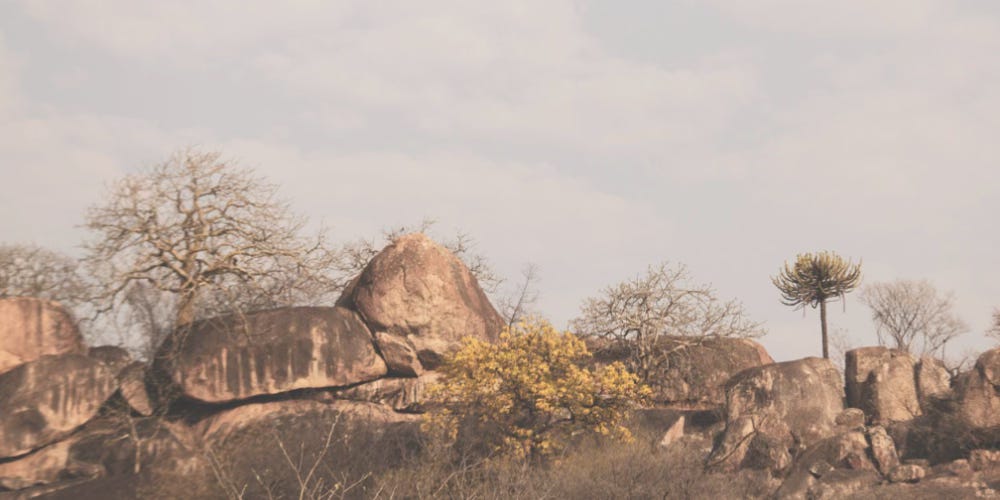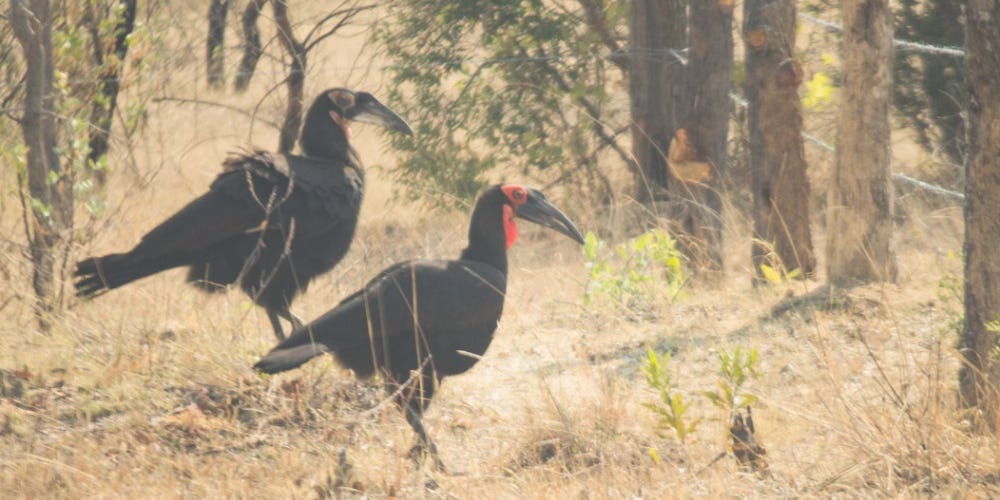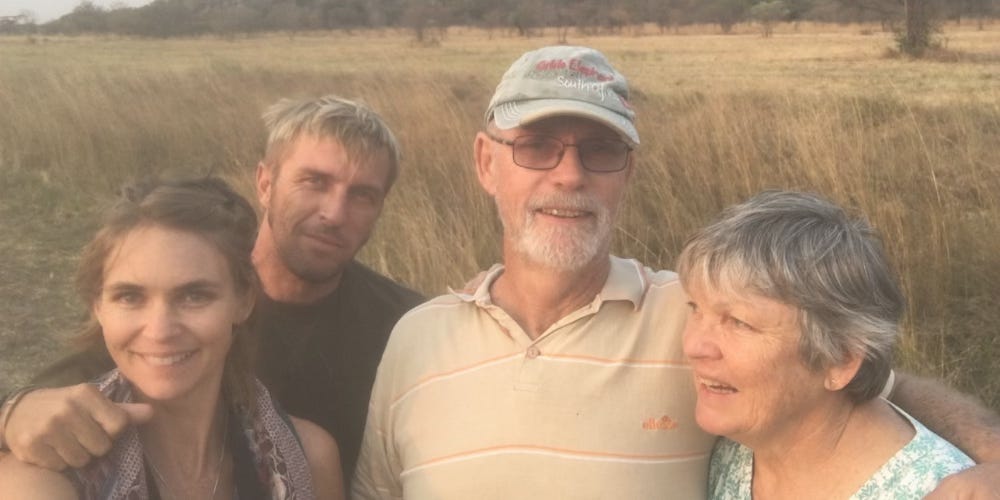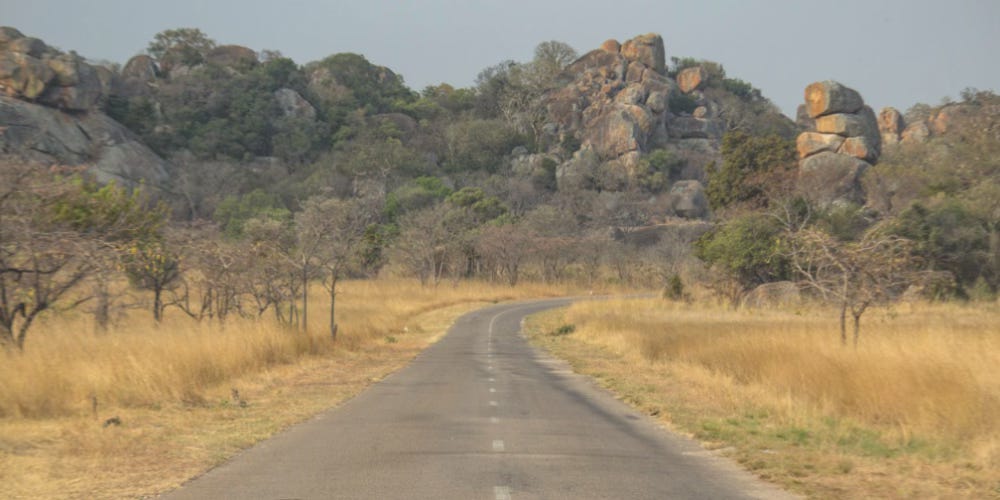Between rocks and hard places
From Zimbabwe: a rather personal story of tradition, and the birds that call the rain
If you’ve arrived here from somewhere on the web, welcome! NE Where is a an independent, travel-focussed journal for curious people. If you’d like to receive pieces like this one via email, please consider becoming a subscriber. It’s free – or, for less than $1 a week, upgrade to a paid subscription, where benefits include full access to NE Where’s archive, which is packed with stories about exceptional women, and other tales about interesting people and places.
Between rocks and hard places
Dear NE-One
This isn’t really the story of a place. It is not about the rocks and boulders that bubble from a landscape, creating the most beautiful vistas I have ever laid eyes on; nor is it the tale of an area so rich in culture and history it is one of the most spiritual places on the continent. It is, instead, a story of tradition and of connection. And it’s also the little-known story of a rather awkward looking bird the Ndebele people refer to as (drop your voice and you’ll hear its call) ihundundu. And it’s a story that must start at the beginning.
Busy day? Take a listen to this piece, instead of reading it:
The beginning, for me, was the early Eighties when I became captivated by my father’s tales of an extraordinary place he called “The Matopos”. A little blonde girl with English ancestors but African soil between her toes dreaming about the balancing rocks her father, in his stories just a few years older than she, would explore with his friends. There’d be no adults with them and for days they’d revel in the freedom of their adventures, sleeping in tents or under the stars; cooking tinned bully beef on a fire; swimming in streams. They’d freewheel roads on their bicycles and clamber over smooth whaleback dwalas as they explored a dramatic area that had once witnessed battles and historic meetings; where boulders marked the graves of kings and adventurers; and where some rocks, local tradition has it, emit the voice of a god.
The Matobo hills have been occupied by humans and our predecessors for almost half a million years. It’s an area so rich in rock art that there are 3000 known sites, with some San paintings dating back at least 13,000 years. It’s possible that many still haven’t been recorded, Dad would say, has he and his friends sometimes came across grain bins and paintings as they explored giant rockeries and wooded valleys. They’d find eagles’ nests, too. These hills have always been a haven for raptors – kites, hawks, eagles, buzzards, and the highest concentration of Verreaux’s eagle on the planet.
It was the way Dad spoke about Matobo that stuck with me most. He didn’t ever have to say it: it was obvious there was something very special about this place. Something magnetic, almost tangible. Almost – dare I say – spiritual.
Of course “the beginning” for the Matobo hills stretches back way further than a little girl’s travel dreams and her father’s memories, and long before there were any humans around the earth was at work constructing the skeleton of the place that would become home to Mlimo, god of the Mwari religion. It was probably two-billion years ago, geologists say, that lava boiled from beneath the earth’s surface and formed the granite slab that underlies much of what is now Zimbabwe. Over time (lots of it) weather and ancient rivers washed and peeled and cracked and stripped the seamed granite, creating bald domes and magnificent boulders – some as large as a bus, others a football – that balance so precariously on one another.
This story was first published in High Life, the inflight magazine for British Airways.
The Matobo hills stretch across 3100 square kilometres; about one seventh of this area is national park and somewhere around the southwestern fringe of the park is Njelele, the sacred rainmaking shrine that is home to Mlimo, the creator of this world. Shona-speaking people call him Mwari (Mlimo is the Ndebele name); he is the highest and final authority behind the ancestors and it is he, according to tradition, who provides the rains.
To this day, rainmaking ceremonies are held at Njelele and it remains a shrine so sacred that one may not visit it without being accompanied by a traditional priest. Leaders from around Africa still attend ceremonies here and many walk away believing that their footprints will soon be dissolved by rain, leaving the shrine untraceable.
It was September a few years ago, a few weeks before the rains were due to begin, that for the first time my footprints fell alongside my father’s in the Matobo hills. We sat together on a dwala and watched the sun rise, throwing shadows that gave vivid form to the rocky landscape. We visited Dad’s old friend Adam Moyo, who has looked after Gordon Park, the birthplace of the Boy Scout movement, for the past 57 years. We walked through the Scout campgrounds – a movement so influential in so many boys’ lives – and climbed the boulders behind its chapel. And we sat together, my father and I, as eagles soared and we watched the sun set: a G&T in my hand and a beer in Dad’s, as is our tradition.
We eventually left the national park through Moyana gate; the same road, Dad said, that Adam would cycle home on each day. We chose this indirect route to Bulawayo because as soon as we crossed the park’s boundary, Adam had assured us the day before, we would find hundundus. And true enough, within 200 metres we did.
You might know ihundundu as the southern ground hornbill (Bucorvus leadbeateri), the largest of the 54 hornbill species with adults often standing more than one metre tall. The birds are black with a body that looks hunched and feathers that end in an untidy ruffle around thickset legs. They have a large gathering of flabby red skin on their throat and the bare area around their pale yellow eyes is red too; the females have patches of blue just under their heavy, horned beak. Despite having rather long eyelashes, one would struggle to describe their appearance in a flattering manner – but looks matter not, for the Ndebele people believe that hundundus are the birds of the gods. The callers of the rain.
“The hornbills’ breeding season begins just before the rains start in October,” explained Evans Mabiza, who’s been researching and monitoring ground hornbills in the Matobo area since 2007. “Of course as birders and scientists we can explain why the birds are very vocal at that time of year, but traditional belief is that their call summons the rain.”
We’d met Evans just before leaving the park and decided to spend the day with him, exploring what looked initially like back roads but in reality are the lifelines that weave through the Matobo district, connecting rural homesteads with schools, the humblest of shops, occasionally a clinic and eventually the bigger roads to Gwanda, Kezi and Bulawayo. Evans had promised to show us through “his” Matopo: the communities he’s worked in for the past decade, gathering cultural and scientific information on hundundus for CNCZ Southern Ground Hornbill Project, and also as part of the work he does for the Children and Nature Conservation Zimbabwe Trust (www.cncztrust.org) that he founded, teaching children about the environment.
Is Matobo National Park just as you remember it, I asked Dad as we sat with Evans under a mopane tree and watched five hornbills pluck and peck through the grassland. “The landscape is just as spectacular,” he replied, looking towards a boulder that was divided in two by an old fig tree, “and you still get that feeling. But there are fewer animals now.”
There are hardly any, it seems. In four days we saw six skittish klipspringers and caught the flash of a fleeing rhino and her calf. The grazing herds of sable, wildebeest and zebra have dwindled and in their absence ubhoqo has grown so thick and wild that the women from neighbouring communities now come in to harvest the yellow thatching grass.
“There were often ground hornbills around when I was a kid, but this time we’ve not seen a single one in the park. It could be because most of the large grazers are gone,” Dad, an ecologist, explained. “Hornbills need shorter grass because they scratch and forage for their food. It might be due to a loss of habitat that we didn’t see any in the park.”
Across southern Africa the southern ground hornbills’ population is in decline. The IUCN lists the bird as vulnerable – one classification away from endangered – but in Matobo the species isn’t just stable, it’s growing: whereas elsewhere the monitored hornbills breed once every six to nine years (and every 9,6 years in Kruger National Park), the hundundus in Matobo are producing young every year or two. And what’s stumped conservationists is that the birds no longer exist in the national park: the 1300-strong population lives outside the boundaries, among the people.
To Evans, however, it’s simple: the birds have it all figured out. People chase baboons and monkeys away from their crops when they’re farming – the time of year that coincides with the hornbills’ breeding season – and that conveniently clears the area of hundundus’ major predators. Many of the large trees they once nested in have been felled or burnt, so the hornbills have started to nest in the rock koppies close to peoples’ homes. In agricultural areas you tend to get a lot of rodents, and rodents attract snakes – the hornbills feed on both – while grazing cattle keep the surrounding grass low and provide ideal conditions for the foraging birds. Plus, Evans says, hundundus have tradition on their side.
Out here, where homesteads are sparsely scattered between the koppies and dwalas, most families are subsistence farmers so rain is, of course, a fundamental element of survival. People here believe the hornbills are vital to ensuring a fruitful rainy season so the birds are revered throughout the region. This was once the case around much of southern Africa but while traditional beliefs have eroded elsewhere, old ways die hard in Matobo.
For the Ndebele people who live on the communal land outside Matobo National Park, life remains fairly traditional. Although Zimbabwe is largely Christian, custom is still upheld and many families have found a way to combine their beliefs. A black bird or animal will never be eaten because it is a bad omen. A vulture is considered good luck because it can see into the future. If a person carries the name of an animal, they will not eat that animal. And around here no-one would ever – ever – harm ihundundu. Kill a ground hornbill, the people say, and you will go mad. You will anger the rain god, thereby inviting drought – and you will be exiled from your community.
Hundundus are considered such a vital element to life in Matobo that when a ground hornbill dies it is given the same burial rites as a human. “These ceremonies and rituals are to appease the rain god,” Evans explained. The ceremonies must take place before the bones start to scatter, as it is believed that these will attract lightning. “The problem for us researchers is that the people will not allow us to touch the dead birds. We’d like to take DNA samples and collect specimens but the community will not allow it: the people need to do what they must to appease their gods.”
“We consider ourselves blessed to have the birds nesting here,” Mrs Moyo assured us as she leant against her front gate. It is custom here to address elders by their surnames and although Evans has known her for more than a decade, he has never known Mrs Moyo’s first name. A small group of hornbills has been nesting in the rocks behind her homestead since 1982 and Mrs Moyo records their movements in a notebook for Evans. Hers is one of 17 families in the Matobo district who keep written records of the birds with which they share their backyards: today we saw the chick for the first time; this afternoon a male brought a snake to the nest; yesterday, they started to call.
“We enjoy seeing hundundus sitting on the rocks,” Mrs Moyo mused. “They are not scared and they come very close to us. They control pests, rodents and reptiles around our homestead and the only challenge is that when we let our small chicks out, the hornbills take those. The birds don’t disturb us and we will not harm them – they are birds from the gods. And besides, their call tells us when the rain will come.”
“Have you heard the birds call yet?” Dad asked, resisting an urge to check the sky. Not yet, Mrs Moyo replied.
I opened the weather app on my phone: no rain predicted for the week.
There is a book at home that was a gift to my dad: a guide to the Matobo area edited in 1956 by Sir Robert Tredgold. Its words fuelled my dreams as a child: “In every part of the hills, scene succeeds scene of unbelievable beauty and wildness… there is something more subtle that defies definition and that makes the hills unique.” Inside the front cover there is a note to my father written by his friend John, with whom he explored these hills. “Remember that however many times you read this book you will never know the Matopos well enough”, John wrote. I’m tempted to add my own note, now: and remember that however many times you wander these hills – no matter how fleeting your stay or how many decades between visits – you will never escape the spirit of this place. Nor will you want to.
Until next time,
Narina x











Narina, I love how transporting your posts are. I feel like I am wherever you are as I listen. And I love learning the name hundundus and its meaning. Thank you. ♥️